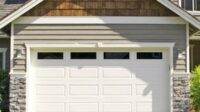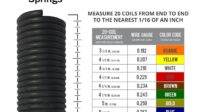A swimming pool enhances your home’s aesthetic and provides a means of cooling off on sunny days. However, you must know that a lot goes into maintaining a pool and must be ready to spend time and money to keep it in good condition.
The most important thing is maintaining your pool’s hygiene. You must regularly skim, brush, and sanitize your swimming pool. A dirty swimming pool is a breeding ground for bacteria; dirty water can irritate the skin and eyes. If you want to avoid swimming in a dirty pool, read on and learn how to maintain your pool hygiene.
Cleaning Your Pool
If you have a pool, you must invest in the best pool cleaning equipment to maintain your swimming pool’s hygiene.
Items Needed
- Telescopic pole: this can be attached to the leaf skimmer, pool brush, and pool vacuum. It is a must-have equipment for all pool owners.
- Leaf skimmer: This is another must-have pool cleaning equipment as it helps scoop out all the leaves and other foreign bodies from the pool. If you don’t cover your pool when it’s not in use, you must skim at least once a day.
- Pool Brush: This is attached to the telescopic pole and helps scrub the bottom and the sides of your swimming pool.
- Pool Vacuum: This helps clean the floor of your swimming pool.
- pH tester: A pool tester is vital as it lets you know when to adjust the water chemicals to avoid irritated eyes and skin.
- Chlorine or other sanitizers: It is one of the most used chemicals in a swimming pool

Step-By-Step Process of Cleaning Your Pool
Follow these instructions when cleaning your swimming pool.
1. Skimming
Before cleaning, you need to clear your pool of floating leaves. Take your telescopic pole and attach your leaf skimmer. Ensure that the net skimmer is intended for the swimming pool to avoid transferring germs from other places into the pool.
Using your net skimmer, scoop out all the leaves and other debris from your pool. This should be a consistent activity even when you have no cleaning plans. It keeps your pool free of contamination.
2. Scrubbing
Attach your brush to the telescopic pole and brush the bottom and sides of your swimming pool. Don’t forget the stairs and ladders. You should brush your pool once every week, especially during summer, as it’s when it’s mostly in use. Apply force when brushing to get rid of grime.
Note that the type of brush you use depends on the material used on the floor and walls of your pool. For instance, you can use a stiff brush if it’s concrete. However, if it is made of fiberglass or vinyl, you must use a softer brush.
3. Vacuuming
After skimming and brushing, the dirt will rest at the swimming pool’s base. So, take your pool vacuum to clean the swimming pool floor. As usual, there are different types of vacuums; therefore, consult an expert to get the vacuum fit for your needs.
Types of vacuum cleaners
- Automatic Cleaner
Automatic cleaners are available in three categories. Suction side cleaners are not recommended as they suck up rock, which can be dangerous for your pool’s filtration system.
Pressure-side cleaners are better as they suck up the debris and dirt from the pool’s base and place them in a removable bag. However, with this method, you’ll be required to run your filter for a few hours.
And the one that takes the cup is the robotic pool cleaner. The cleaner has two self-contained units that roam around the pool’s base collecting all the dirt and debris. Although it’s pricey, it’s a worthy purchase.
- Manual Cleaner
You can invest in a manual cleaner if you don’t have the budget for an automatic vacuum cleaner. The only downside to a manual cleaner is that it’s laborious but cleans well.
When working with a manual cleaner, you must set it up, which requires you to attach it to the telescopic pole.
Then slowly lower the vacuum head to the bottom of the pool. Then remove the air from the hose and attach it to the pump. If you need help with how to do it, follow the manual instructions in the guide and if you are stuck, call the number indicated in the product guide.
After you’ve connected, start vacuuming the same way you do with a carpet, and repeat the part that appears too dirty.
If your pool gets dirty quickly, make a point of vacuuming it every week to maintain cleanliness and ensure it’s safe for use. You will notice that cleaning it regularly enhances the color of the water.
4. Filtration System
After you are done cleaning your pool. You must check your filtration system and remove all the dirt and grime buildup. The best way to clean your filter is to remove the cap, lift the filter basket, empty and clean it, return it and close the lid. Do this once every week to keep it working well and prevent clogging.
You should also clean out the pipes connected to your filtration system by setting it in a backwash. Run it, and your pipe will eject all the dirt in the pipe. Don’t do this often, as it can result in a faulty filter mechanic. If it doesn’t work correctly after all this, have it replaced.
5. Clean The Deck
Cleaning inside is as important as cleaning the area surrounding your swimming pool. You can wash the deck with a power washer. First, sweep off the leaves and dirt, set up the power washer, clean, and rinse.
6. Chemicals
After ensuring that your pool is clean and there is no dirt or foreign object, it’s time to sanitize your water to kill all the germs and bacteria and maintain the correct pH levels. You can buy a pH tester online or at a nearby supermarket and read reviews to buy a reliable one.
Before applying any chemical to the water, you need to test the water’s pH. You must understand that the level of chemicals in water can be affected by various factors, such as weather, dirt, algae, water hardness, and alkalinity.
The pH levels in your swimming pool should range between 7.2 and 7.8. If the levels are below, use a pH increase or a reducer if it’s high.
Incorrectly balanced water has a murky or cloudy look and can irritate your skin and eyes. It also creates a perfect breeding ground for bacteria. There are six chemicals you can use to maintain your pool hygiene, and they include:
- Cyanuric acid: It helps protect chlorine from UV rays. It also helps determine the acceptable levels of chlorine.
- Chlorine: It sanitizes your pool, keeping it safe and free from germs.
- Acidity/alkalinity: Helps maintain your pool Ph levels between 7.5 and 7.8 to prevent skin and eye irritation. It also helps protect the water from eroding your pool equipment.
- Total Alkalinity: Helps Ph balance, usually between 60 and 120.
- Calcium hardness: Helps prevent damage to your plaster. It should be maintained between 220-350. However, if you have vinyl, the levels should be lower.
When the water chemicals are balanced, the water will be crystal clear, have no scent, and not cause irritation.
7. Shock Your Pool
While this is done primarily in school, it would be good to shock your pool occasionally, especially after throwing a pool party for adults or kids. Shocking a pool helps you get rid of germs and bacteria quickly.
Shocking is a process where you use high levels of chlorine or any other chemical sanitizer. You must pour the chemical slowly into the pool line and then spread it throughout. Then you need to fill the pool with water.
Don’t make a habit of shocking your pool, as it can cause damage to your pool’s siding.
Tips for Maintaining a Clean Pool
You want your pool to always stay clean and last longer without renovations. These tips will help in maintaining a clean pool.
-
Water Level:
The water level in your swimming pool fluctuates; it can be ridiculously high after a heavy rainstorm or low after several days of swimming activities. You can connect your hose and refill to the correct level when the level is low. On the other hand, when the water level is high, you can reduce it by submerging a pipe and draining the excess water.
After adding or draining, remember to check the chemical levels and adjust accordingly.
-
Use a Tennis Ball to Absorb Oils
When people go swimming, they have different types of lotions applied to their bodies. The oils float in your pool and create a grime line on the wall of your pool. You can remove the oil using a tennis ball. The fibers on the ball help absorb the oil.
- Maintain the correct water pH balance.
- Get a cover for your swimming pool. This helps keep leaves and dirt off.
- Erect a fence around your swimming pool. This keeps pets and other animals looking to get a dip away. Thus keeping your pool clean.
- You can use baking soda to sanitize your pool if you don’t want to use chemicals.
- If your pool is not covered, let skimming be a daily activity.
- After cleaning the pool, you must also sanitize the cleaning equipment.
- Always use tap water to fill up your pool.
- Use the right amount of chemicals, as too much can harm your health.
Final Thoughts
Cleaning your pool can be tiring but well worth the labor as it ensures you have a great time swimming. Skimming should be done at least once a day, especially if your pool is not covered, and cleaning once a week. Use the steps discussed in this article to maintain the hygiene of your swimming pool.






